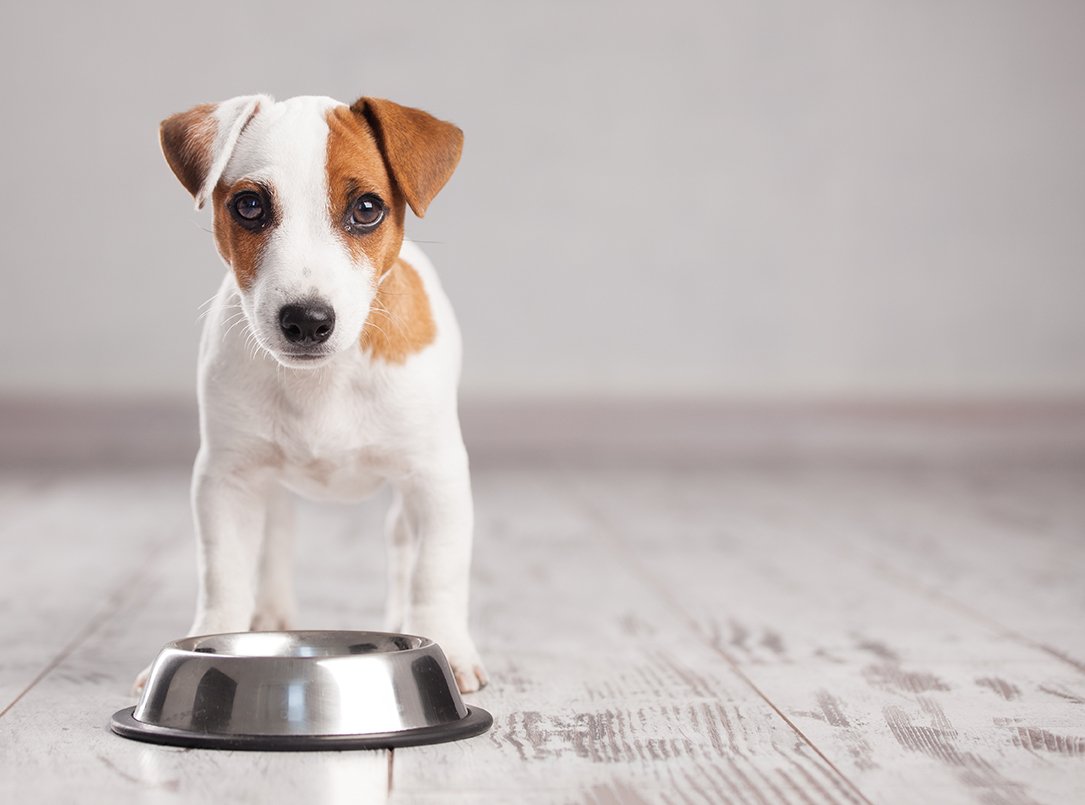Free Feeding vs. Scheduled Feeding: Which is Better for Your Dog?
Is it feeding time? photo: AdobeStock
My dog training clients often ask whether it's okay to leave a bowl of dog food out all day or if they should feed their dog on a schedule. It's a reasonable question with a fairly straightforward answer: absent a few particular scenarios, scheduled feeding is nearly always the better choice.
What Is Free Feeding?
Free feeding is when you make your dog's food available all day, allowing your dog to eat whenever he wants. There are a few scenarios where it may make sense to choose free feeding, instead of scheduled meals. Some medical issues require dogs to eat frequently throughout the day (consult your vet if you think this may be the case). I have also fostered undernourished dogs who were initially too anxious to eat when people were around, so leaving food for them to graze when they felt comfortable was best for them. Despite a general reputation for gluttony, not all dogs will eat until they pop. But for most, scheduled feeding is a better option.
What is Scheduled Feeding?
Scheduled feeding is when you feed your dog at regular meal times and put your dog's food away if they haven't finished eating after 10-15 minutes. Most dog owners choose to feed their dogs at breakfast and dinnertime. Puppies typically need 3-4 meals per day. Please note that clean water should always be available to your dog, whether you’re doing free or scheduled feeding!
Why Is Scheduled Feeding Better?
Why is it generally better to feed your dog at scheduled times? Here’s a quick look at some of the benefits.
Helps Maintain a Healthy Weight. Unless you are portioning your dog's food daily using a measuring cup, free feeding can lead to weight problems. According to the Association for Pet Obesity Prevention, 55% of pet dogs in the United States are clinically overweight or obese. Leaving food out all day and topping off the empty bowl encourages overeating. Overweight dogs are vulnerable to other health conditions such as joint issues, diabetes, kidney and liver disease, breathing problems, and high blood pressure.
Lets You Know When Your Pet May Be Ill. Changes in appetite are often the first indicator that your dog may not be feeling well. But it can be difficult to notice a change in eating habits if your dog's bowl is always full. Feeding the same amount at the same times of day allows you to monitor your dog's health and schedule a vet visit if needed.
Encourages Interest in Training. Food is an important component of positive reinforcement training. When a client tells me their dog is not interested in training treats, more often than not, it's because their dog has access to a full food bowl throughout the day. Meal times are a great training opportunity. Set aside a portion of your dog's food for a quick training session at the beginning of each meal and then give them the remainder in their bowl.
Makes House Training Easier. Scheduled meal times and potty breaks are a must for successful house training. Eating at the same time every day will help your puppy eliminate on a regular schedule.
Helps Manage Feeding in Multi-Dog Households. If you have more than one dog in your home, scheduled meals will help prevent a greedier pup from gobbling up more than its fair share. Also, scheduled feeding may be necessary if your dogs eat different foods or if any of them are on a prescription diet.
Promotes Food Safety.
Food left out throughout the day may be exposed to bacteria, potentially causing digestive problems. Canned food, cooked food, or raw food should not be left out at all. Wash all dog bowls thoroughly after every meal and discard uneaten food. Food left out all day can also encourage mice and ants, which no one wants in their home.
Fosters Meal Time Enrichment Activities.
Slow feeders, food puzzles, scatter feeding, and kongs are all great ways to feed your dog while providing mental stimulation. Food toys can reduce boredom, relieve stress, help with inappropriate chewing, and keep your dog from bothering you at your dinner table. I've worked with quite a few dogs who will turn their noses up at a bowl of kibble but will enthusiastically work for those same morsels in a training session. “Contrafreeloading” is the technical term to describe when an animal is given a choice between easy access to provided food or food that requires effort to obtain and prefers the food that requires effort. If you think your pup may be a contrafreeloader or you need help reducing inappropriate behaviors, definitely try some alternative food delivery methods. To get you started, here’s a list of some of the best interactive food toys for dogs.
Ultimately, you know what works best for your dog and your lifestyle. But if you are currently free feeding, you may want to give scheduled feeding a try. The benefits are many: it helps maintain your dog’s weight, provides stimulation and variety, promotes better food safety, and lets you use food as an opportunity for training and bonding. And what’s not to love about that?
